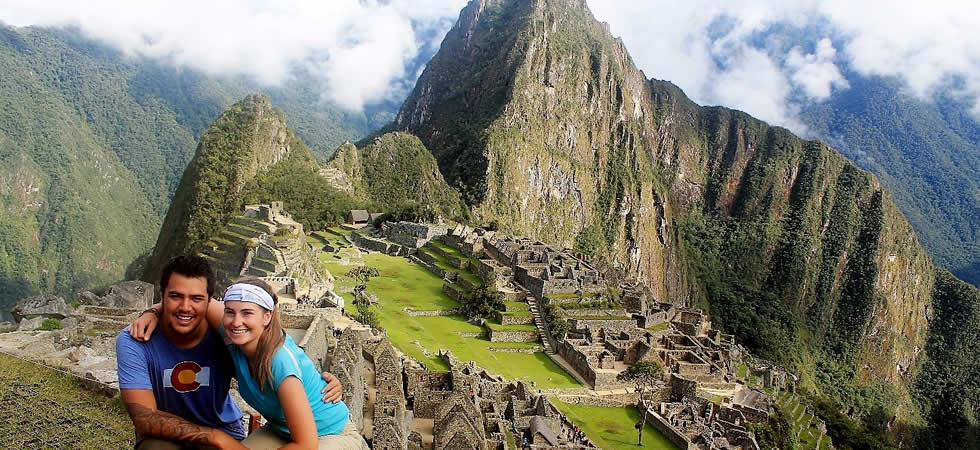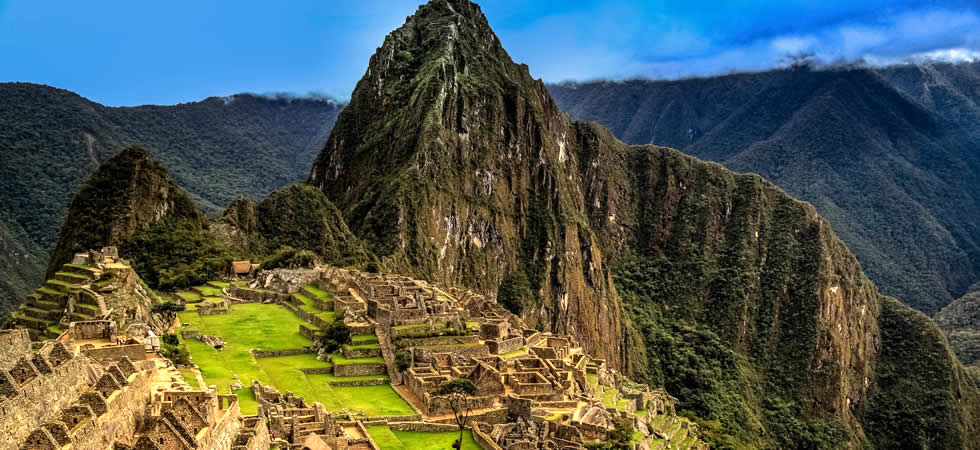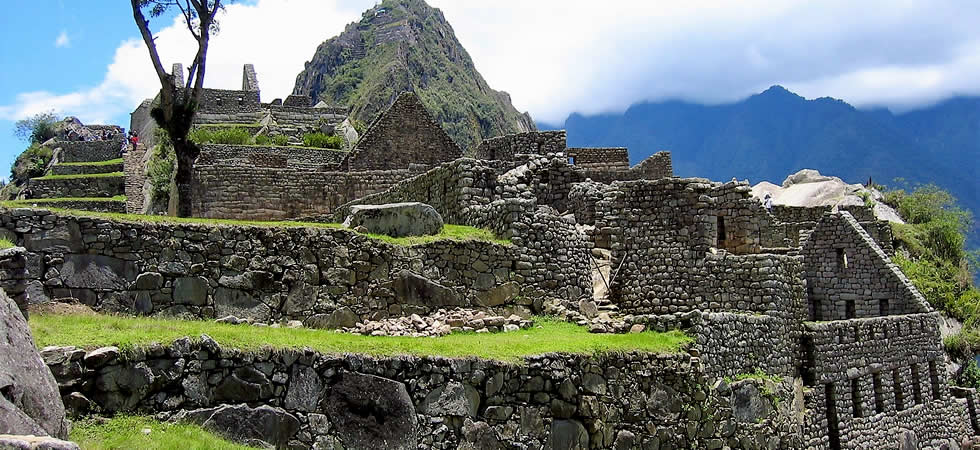Machu Picchu History
Machu Picchu is an ancient Incan citadel located in the Cusco region of Peru. The site is situated on a mountain ridge above the Urubamba River. It is the most significant archaeological site in South America. The citadel was built in the 15th century and was rediscovered in 1911 by the American explorer Hiram Bingham.
Machu Picchu was built during the reign of the Inca emperor Pachacuti and was most likely used as a royal retreat or a sacred religious site. The citadel is made up of several hundred stone structures, including temples, palaces, and terraced agricultural areas. The architecture of the citadel is characterized by its precise stonework and the use of natural features of the landscape, such as the steep terrain and the surrounding mountains.
Archaeological research suggests that the Incas abandoned the site around the time of the Spanish conquest of the region in the 16th century. The citadel remained hidden from the outside world until its rediscovery by Hiram Bingham in 1911 at Yale University. Since then, Machu Picchu has become a significant tourist destination and a UNESCO World Heritage Site.
Machu Picchu is a unique and impressive site. The combination of the natural beauty of the surroundings, the architectural achievements of the Incas, and the mystery that surrounds its purpose and abandonment, make it one of the most visited tourist destinations in South America. Visitors can take guided tours of the site, which include a visit to the main structures, such as the Temple of the Sun, the Intihuatana, and the Temple of the Condor, and also hike the famous Inca trail to Machu Picchu or do the challenging Huayna Picchu trek.
Machu Picchu Tours
Visitors can reach Machu Picchu by taking a train from Cusco or Ollantaytambo to the town of Aguas Calientes, which is the closest town to the site. From Aguas Calientes, you can take a bus or hike to the citadel. It's important to note that the number of visitors to Machu Picchu is limited, therefore it is recommended to book your Machu Picchu ticket in advance at the official Machu Picchu Ticket website (the only one) or through a Machu Picchu tour operator.

Machu Picchu Tours Cusco
Visit Machu Picchu
There are several ways to visit Machu Picchu according to the type of entrance ticket (different tickets correspond to four unique circuits or routes within Machu Picchu). Since 2019 you have to enter the site with an official guide. A guided tour in Machu Picchu includes visiting the main structures, such as the Temple of the Sun, the Intihuatana, and the Temple of the Condor. There is an extra entrance ticket for those who like to hike up to the top of Huayna Picchu, the mountain behind Machu Picchu, from where you have an excellent view of the site.
Huayna Picchu
Huayna Picchu (“young peak” in Quechua) is the iconic mountain behind the lost city and is an essential part of Machu Picchu. Although the path of the Huayna Picchu hike is quite steep, it is possible to climb up in less than an hour. In addition, the trail offers some beautiful Inca ruins. If you want to do this and take stunning photos from the top of the mountain, reserve your Huayna Picchu ticket several months before.
Machu Picchu weather
The weather in Machu Picchu can be unpredictable, and it is recommended to bring warm clothes and rain gear as well as comfortable shoes for walking. The citadel is located at an altitude of 2,400 meters above sea level, so it’s lower than Cusco. The peak of Huayna Picchu is 2,700 meters.
Machu Picchu is a sacred site protected by UNESCO; therefore, the rules for visiting are rather strict. You cannot enter with big bags or backpacks, selfie sticks, or hiking poles. Visitors are expected to respect the site by not climbing on the ruins, touching the walls, or taking away any artifacts. Also, smoking and littering are not allowed.

Machu Picchu Cusco Peru
Machu Picchu trains
Several trains travel to Machu Picchu, each offering different levels of comfort and amenities.
Expedition train: This is the most economical train option that offers comfortable seating, panoramic windows, and basic amenities such as a café-bar service. This train is perfect for those looking for a budget-friendly option while still enjoying the journey to Machu Picchu.
Vistadome train: This train offers panoramic windows, comfortable seating, and more amenities than the Expedition train, such as an onboard guide and a more extensive café-bar service. This train is perfect for those who want to enjoy the journey to Machu Picchu comfortably but at a more affordable price.
Belmond Hiram Bingham: This is a luxury train that offers first-class service. It includes a gourmet dining car, an open bar, and a lounge car with live music. The train also has panoramic windows and comfortable seating, including a guided tour upon arrival to Machu Picchu. This train is perfect for those who want to experience a once-in-a-lifetime VIP journey to Machu Picchu in style and luxury.
The trains to Machu Picchu depart from either Poroy or Ollantaytambo train stations and arrive at the Aguas Calientes station, nearby Machu Picchu. From there, visitors can take a bus or hike to the citadel. It's essential to check the schedules and book your tickets in advance, as the number of visitors allowed to enter Machu Picchu is limited, and the trains and buses can fill up quickly.
Machu Picchu hikes
You can also hike to Machu Picchu instead of going by train. The most popular Machu Picchu hike is the famous Inca trail to Machu Picchu. This multi-day hike takes visitors through the most beautiful landscapes of the Inca Empire and the famous Machu Picchu.

Machu Picchu Inca Citadel Peru
But there are several other Machu Picchu hikes, each offering a different level of difficulty and duration.
Inca Trail:
The Inca trail is the most famous hike to Machu Picchu. It is a multi-day hike that takes you through some of the most beautiful landscapes of the Inca Empire. The hike covers a distance of approximately 45km and takes four days to complete – day 4 includes a tour of Machu Picchu. It is considered a moderate to challenging hike and requires a good fitness level. It is also important to note that a permit is needed to hike the Inca Trail, and the Inca Trail tickets are often sold out months in advance. Read more: www.incatrail-peru.com
Salkantay Trek:
This is a 5-day hike through the beautiful Andean mountain range. The Salkantay hike covers a distance of approximately 75km and is considered to be a challenging hike. The Salkantay Trek offers stunning views of snow-capped peaks and passes through remote Andean communities. You arrive in Aguas Calientes on day four and visit Machu Picchu on day four. There is also a 4-day version of this Machu Picchu hike.
Lares Trek:
This is a three or 4-day day hike that takes visitors through the Andean mountain range and remote Andean communities. The hike covers a distance of approximately 40km and is considered to be a moderate hike. The Lares Trek offers stunning views of snow-capped peaks and passes through remote Andean communities. On the pre-last day, you take the train in Ollantaytambo to arrive in Aguas Calientes and visit Machu Picchu on the last day.
Inca Jungle Trek
The Inca Jungle Trek is considered a Machu Picchu hike, but it includes many different activities, like trekking, cycling, white-water rafting, and zip lining. Also, the Inca Jungle trek – as the other Machu Picchu hikes - finishes on a high with a visit to Machu Picchu. The total distance is about 50 kilometers.
It's important to note that all the hikes to Machu Picchu require a good level of fitness, being acclimatized to the altitude, and proper gear.
Aguas Calientes
Aguas Calientes, also known as Machu Picchu Pueblo, is a small village in the Cusco, located at the base of the mountain on which Machu Picchu is built; it is the closest town to the Inca citadel. The town is a popular destination for tourists visiting Machu Picchu, as it is the main starting point for the journey to the citadel.
Aguas Calientes is a small and rustic village that serves as the main starting point for visitors to Machu Picchu. It offers a variety of options for accommodation, food, and souvenirs. It's a nice place to relax and unwind after a long day of exploring the citadel – or to spend the day before you go and see Machu Picchu.
The village of Aguas Calientes is situated along the Urubamba River and is surrounded by lush subtropical forests. The village is home to a variety of restaurants, cafes, and souvenir shops, as well as several small hotels and guesthouses.
One of the main attractions of Aguas Calientes is the hot springs, which are located just outside of town. The hot springs are believed to have healing properties. They are a popular spot for visitors to relax and unwind after a long day exploring Machu Picchu.
Questions about Tours to Machu Picchu?
If you have questions about tours to Machu Picchu and the planning of your trip, we gladly connect you with a travel agency in Cusco. Contact us with your questions!
Questions re: Machu Picchu Tours